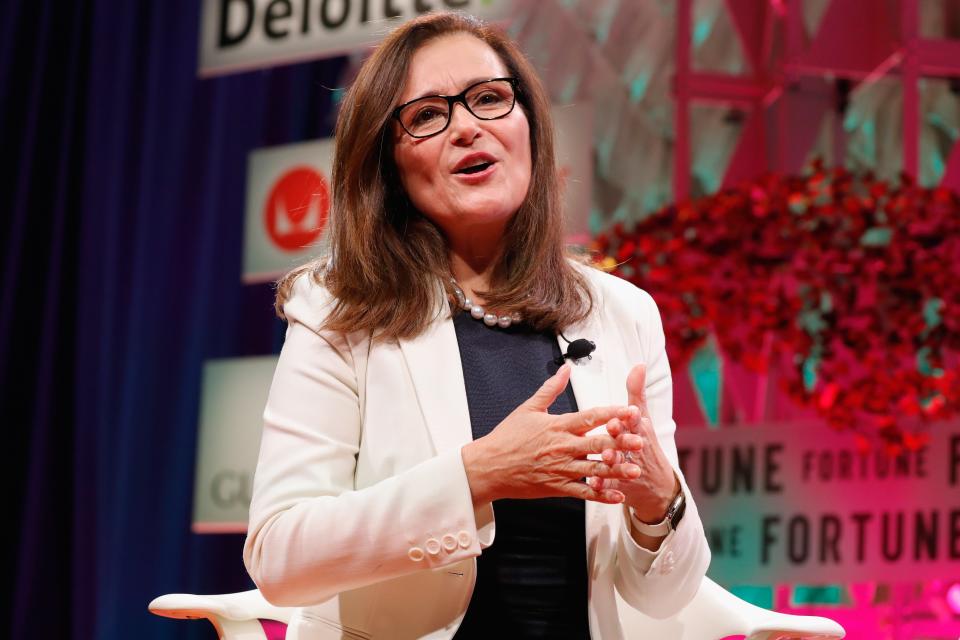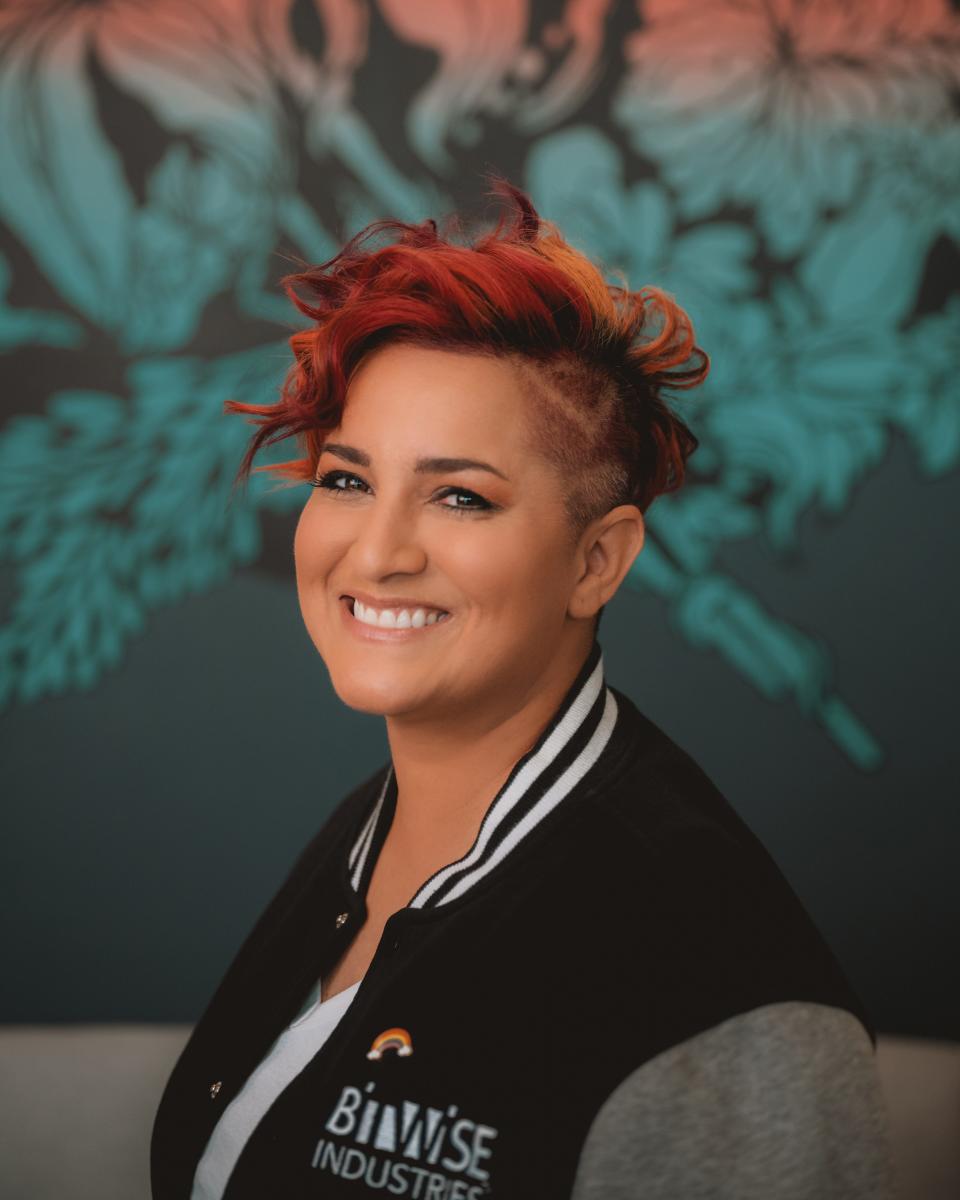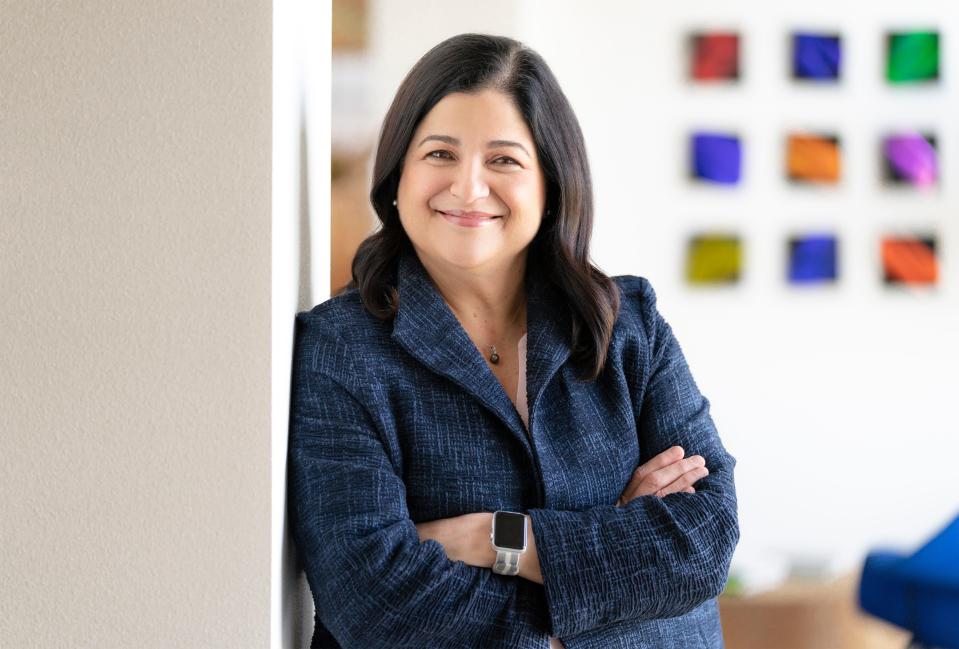Only two Latinas have been CEO of a Fortune 500 company. Why so few Hispanic women make it to the top
CORRECTIONS & CLARIFICATIONS: An earlier version of this story misstated the number of Latina CEOs in the Fortune 500. There are two.
When Geisha Williams took over PG&E in 2017, she was stunned to learn she was the first Latina CEO of a Fortune 500 company.
There has only been one since.
Hispanic and Latina women make up just 1.6% of senior executives in the nation’s largest companies, according to a USA TODAY analysis of the S&P 100.
They lag behind nearly all other major demographic groups – white men and white women, Black men and women, even Hispanic and Latino men in the executive ranks –but are disproportionately represented in lower-paying, low-mobility jobs, the analysis shows.
In interviews with USA TODAY, Latinas said they are often seen as caretakers, not corporate leaders. They have few mentors and are passed over for promotions.
If they speak English with an accent, they are told they are too hard to understand or that they are not articulate enough. They face stereotypes of being the sexy or fiery Latina. And, despite high levels of education and experience, they are mistaken for domestic help and asked to get coffee or clear tables.

The daughter of Cuban political refugees, Williams said she's angry she's still one of only two Latina Fortune 500 CEOs.
She got the job just months before PG&E power lines sparked deadly wildfires and stepped down less than two years later as the California utility prepared to declare bankruptcy.
'It's got to change': Former PG&E CEO Geisha Williams speaks out on the lack of Latina executives in top companies
Cheryl Miller, the first female CEO of a publicly traded auto-dealership chain who was born in Puerto Rico, served as CEO of AutoNation from 2019 to 2020.
“There are an incredible number of supremely qualified and capable women. It’s not a question of there aren’t people available to serve in these positions,” Williams said.
Apple, Costco, and Netflix have no Latinas in senior leadership
Of the 92 companies in the S&P 100 reviewed by USA TODAY, 18 had no Latinas or Hispanic women in senior executive positions including Apple, BlackRock, Costco, Netflix, and Simon Property Group, the most recently available data shows.
None of the companies had a percentage equal to that of the U.S. workforce, although three companies came close: PepsiCo, Procter & Gamble, and Visa.
According to the Latino Corporate Directors Association, Latinas hold fewer seats on the boards of directors of Fortune 500 companies than any major gender or ethnic group, just 1%.
“Latinas are more than qualified to take on those executive roles,” said Cid Wilson, CEO of the Hispanic Association on Corporate Responsibility.
Hispanic refers to people of Spanish-speaking heritage, while Latino describes people from Latin America, regardless of language spoken and colonial history. The two groups are not necessarily the same – as in the case of Portuguese speakers from Brazil – but often are lumped together in studies and surveys.
The combined group spans a broad spectrum of race and identity, skin color, education level, and class background. Two-thirds were born in the United States while some have roots in America that predate the country's founding. Immigration stories can vary widely depending on U.S. policy with the country of origin.
Years ago, when she was a new employee, Marta Ronquillo Newhart and about 15 others considered to have high potential met with the chief human resources officer who went around the room asking everyone questions. Newhart was one of the only women and the only Latina.
“What are you? Where are you from?" he asked, when it was Newhart's turn. She proudly said: “I am Mexican-American.”

“Thank god, you don’t look like it,” he replied. At first, Newhart thought she had not heard him correctly but glancing at her colleagues who sat in uncomfortable silence, she knew she had.
“For many years in corporations, you heard the term ‘fit in.’ 'Oh, he fits in.' Well, what does that sound and look like? Oftentimes, it probably didn’t look like me,” said Newhart, a veteran communications executive who worked at Boeing and Westinghouse. “But because of what I gained and what I achieved in corporations, I did fit in.”
Corporations without Latinas at the table are missing a valuable perspective, she said. And that perspective is increasingly important.
'It's not just about the right thing to do'
By 2029, Latinas are projected to be 9.3% of the US labor force. As corporations cater to an increasingly diverse nation and Hispanic buying power soars, Latinas and Hispanic women are sought after as household decision-makers.
“It’s not just about the right thing to do," said Esther Aguilera, CEO of the Latino Corporate Directors Association. "This is about making sure you are on top of the fastest-growing demographic."
Elisa Garcia became a corporate lawyer even though her family had never owned a single share of stock and she didn’t know any lawyers other than the ones she saw on TV.
She was working as regional counsel for Philip Morris International in Latin America when she was ready to take the next step in her career. At the time, Domino’s Pizza was looking for its first general counsel. Garcia built the legal department and took the company public. She also learned to make a large pepperoni pizza in 44 seconds.
From Domino’s, she joined Office Depot and then Macy’s as its chief legal officer. Now she's speaking out so other Latinas know they are not alone.
“You have got to see people who look like you to know you can do it," she said. "Having these role models basically tells Latino lawyers and Latino executives that si se puede, yes, you can do this.”
There are few Latina managers and professionals, too
But it's not easy. Latina and Hispanic women are underrepresented as managers (4.4%) and as professionals (3.2%), according to EEO-1s, federal workforce records that break down the race, ethnicity, and gender of a company’s workforce by job categories.
These numbers are not budging even as more and more Latinas attend college and graduate school. Hispanic women earned 16.4% of bachelor’s degrees and 12.3% of master's degrees in 2020, according to the National Centers for Education Statistics.
Research from the Lean In foundation and McKinsey & Co. shows that Latinas ask for promotions and raises at similar rates to white men, but for every 100 men promoted to manager, only 71 Latinas get the nod, a “broken rung” on the corporate ladder that keeps them from moving up.

Years ago when Carla Piñeyro Sublett, former chief marketing officer at IBM, asked for a promotion, she was admonished for being too ambitious. She checked with male colleagues, all of whom pushed for promotions and raises and none of them had been criticized for it.
“God forbid anybody tell your daughters they are too ambitious,” she told her supervisor. She later resigned.
"I realized with that sort of mentality, I wasn't going to continue to be challenged and continue to grow," said Piñeyro Sublett whose parents are from Uruguay.
'Bias leads to impressions that Latinas are not management material'
Workplace bias and a corporate culture rooted in the professional norms of white men are to blame, from assumptions based on negative stereotypes to microaggressions, says Lisette Garcia, assistant vice president for diversity, equity, inclusion, and belonging at Penn State.
“Bias leads to impressions that Latinas are not management material,” Garcia said.

When Elena Gomez landed her first job as a chief financial officer, she traveled to New York to meet with analysts who covered her company’s stock.
Accompanied by the head of investor relations who reported to her, Gomez had to interrupt the meeting to inform the analysts that she was the CFO, not him.

“They thought I was the note taker,” said Gomez, who is of Salvadoran and Mexican descent and today is CFO of Toast, which provides software and hardware for restaurant services.
“It’s a very specific kind of visibility and invisibility. You’re visible insofar as you’re there to serve people but you’re invisible as a participant and you are certainly never seen as an equal,” said Nicole Sanchez, former vice president of social impact at GitHub and CEO of diversity firm Vaya Consulting.

Little changes as Latinas move up the ladder, says Daisy Auger-Domínguez, author of “Inclusion Revolution” and the chief people officer at Vice Media Group.
“Even when we are in the C-suite, even when we are in these positions of power, we are still these outsiders looking in,” she said.
Latinas say corporations frequently overlook the strengths they bring. Work ethic. Determination. Passion. Instead, they feel pressured to repress parts of themselves – their appearance and body language, how they communicate – to blend in.

Michelle Freyre, global brand president of Clinique for The Estee Lauder Companies, recalls putting away her dresses, hoop earrings, and red lipstick when she entered the workforce 25 years ago.
After an instructor told her in a presentation class that she used her hands too much when she talked, she pinned her arms to her side even though it felt unnatural, like a robot in a straitjacket.

As her confidence grew, she stopped restraining herself.
“When I finally started to make that shift into really leaning into my authentic self, that is when my career really took off,” said Freyre who was born and raised in Puerto Rico and is of Cuban and Dominican descent.
Enna Jimenez, a business transformation and quality leader at IDEMIA who has worked in IT for 30 years and has led large global teams, went from being one of the few women of color in college to being the only Afro-Latina in a room full of men. She dressed in black, brown, and gray to fit in.

“I was trying to find my way, trying to find my voice and trying to carve out a place for me but I began to fear I was losing myself in the process,” said Jimenez, whose family is from Puerto Rico and originally hails from the Dominican Republic. “It was important to me for people to know who I was and that who I was did not take away from the experience I brought into the room.”
Most Latinas trapped in lower-paying jobs
Auger-Domínguez, a Walt Disney, Viacom, and Google veteran who is Dominican and Puerto Rican, says it all comes down to "where you come from and your ability to assimilate.”
"There are far more brilliant Latinas than I am who haven’t been able to break through because they didn’t have that opportunity, they did not have that access," she said. "I would argue that the ones who are more white adjacent are the ones who advance farther in an organization."
Most Latina and Hispanic women in the nation's largest companies are trapped in lower-paying jobs, particularly in the financial, retail, and grocery sectors. They are 7.3% of the U.S. workforce but 14.4% of service workers and 14.1% of administrative assistants, a USA TODAY analysis found.
Not only that, Latinas are underpaid at all levels. On average, they earn 55 cents for every dollar earned by non-Latino white men, even in the same job. That disparity extends to professional occupations and executive roles. The pay gap is widest for Latinas with college degrees, according to Lean In.

Irma Olguin Jr., a third-generation Mexican American granddaughter, and daughter of field laborers from Fresno, California, is trying to close that gap. She started a company, Bitwise Industries, to train people to code and put them to work in the tech sector.
“We need to instill the belief in more folks who grew up the way I did and who look like me that this could be you and that you have just as much right to be here as anyone else,” said Olguin, who identifies as queer.
'Take your seat at the table'
Latinas say they are excluded from formal and informal networking opportunities. Just 5% of Latino professionals in large companies have a sponsor, research shows.
Without these advocates who raised their visibility, opened career opportunities, and had their backs, Latina executives say they wouldn’t have made it.

When Cisco’s chief operating officer Maria Martinez was an engineer at AT&T early in her career, the management team gathered to discuss if she had the chops to be a supervisor.
“A lot of people said, ‘Oh no, she’s too aggressive, she’s too pushy.’ I had a manager there who defended me and then I got the promotion,” said Martinez, who is from Puerto Rico. “Without that sponsor there, my whole trajectory could have changed.”
At Cisco, she has signed up every vice president for an initiative called "The Multiplier Effect," which asks leaders to sponsor at least one diverse candidate in their organization.

Garcia, Macy’s chief legal officer, says she's devoting more time these days to helping Latinas navigate the corporate labyrinth. She says she doesn't want her story to be an anomaly.
In 2018, during the grand reopening of the Macy’s store in downtown Brooklyn, Garcia descended the stairs into the basement where her father, Vincent Garcia Jr., worked for nearly 30 years as a boiler room engineer. She had not been there since she cleared out her father’s locker after he died of a heart attack on the job when she was 18.
The chief engineer pulled out an old bulletin board covered in coffee stains and dust from behind a desk. On it was a faded photograph of a group of about 20 men in about 1960 including her father. The chief engineer pried the photo loose with a pocketknife and gave it to her.
How can other Latinas make that single-generation leap from the boiler room to the executive suite?
“Take your seat at the table. Bring 100% of yourself to work. Companies need to hear your voice,” Garcia said. “They need to hear the cultural side and your functional expertise and your opinion on strategy. Be visible as a leader even if it doesn't come naturally. And don't forget to sponsor and mentor others.”
Asian women shut out of leadership: Our data shows why
Black women in leadership: 2 years after George Floyd pledges, Black women still denied top jobs
Not separate, still not equal: Pressure grows on America’s companies to fix failures of the past
Openly gay in the boardroom: Why so few LGBTQ executives lead America's largest companies
We asked Walmart, Amazon about diversity: What we found may surprise you
This article originally appeared on USA TODAY: Latina leadership: Few Hispanic women executives in largest companies


